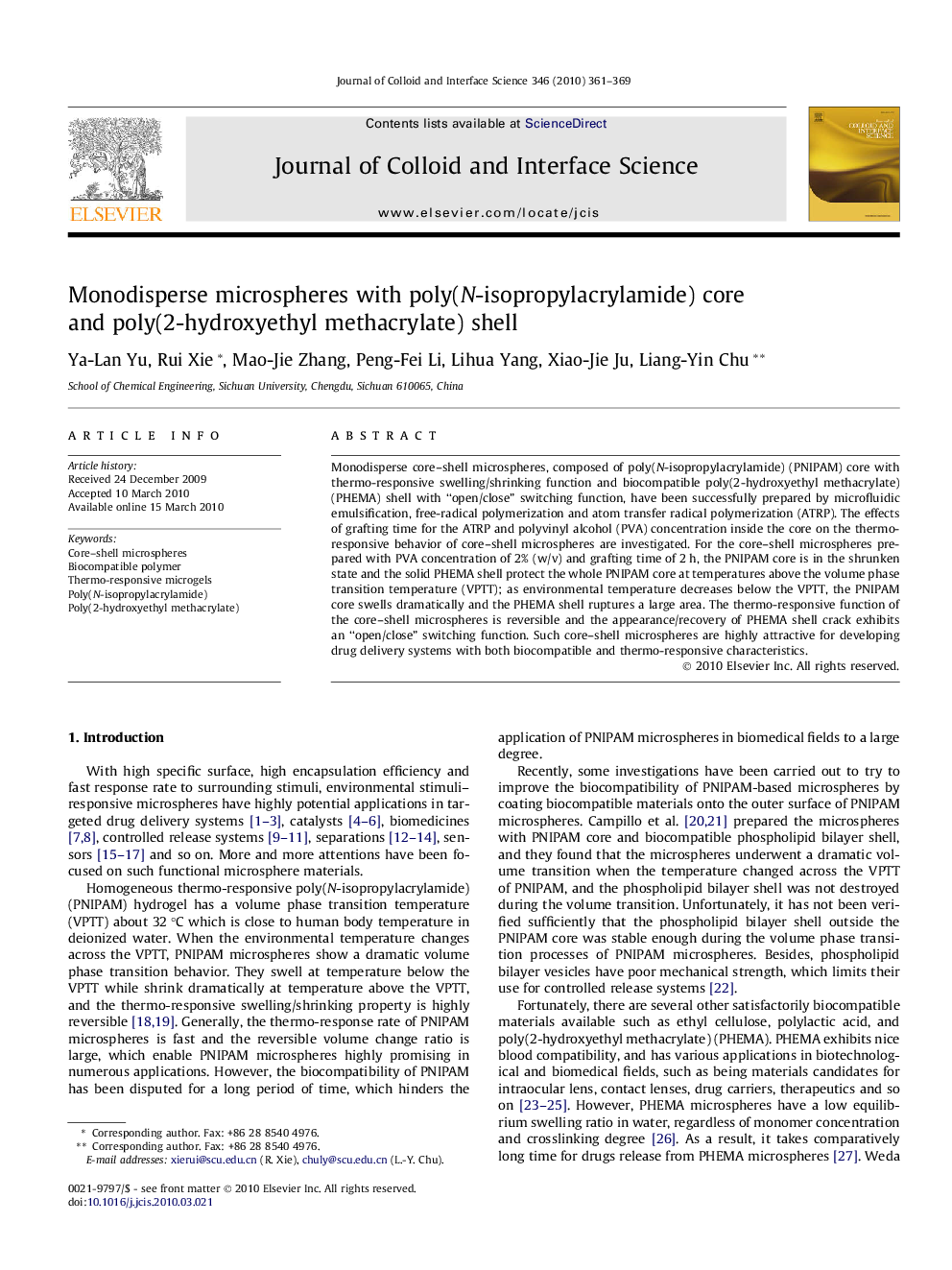| Article ID | Journal | Published Year | Pages | File Type |
|---|---|---|---|---|
| 609774 | Journal of Colloid and Interface Science | 2010 | 9 Pages |
Monodisperse core–shell microspheres, composed of poly(N-isopropylacrylamide) (PNIPAM) core with thermo-responsive swelling/shrinking function and biocompatible poly(2-hydroxyethyl methacrylate) (PHEMA) shell with “open/close” switching function, have been successfully prepared by microfluidic emulsification, free-radical polymerization and atom transfer radical polymerization (ATRP). The effects of grafting time for the ATRP and polyvinyl alcohol (PVA) concentration inside the core on the thermo-responsive behavior of core–shell microspheres are investigated. For the core–shell microspheres prepared with PVA concentration of 2% (w/v) and grafting time of 2 h, the PNIPAM core is in the shrunken state and the solid PHEMA shell protect the whole PNIPAM core at temperatures above the volume phase transition temperature (VPTT); as environmental temperature decreases below the VPTT, the PNIPAM core swells dramatically and the PHEMA shell ruptures a large area. The thermo-responsive function of the core–shell microspheres is reversible and the appearance/recovery of PHEMA shell crack exhibits an “open/close” switching function. Such core–shell microspheres are highly attractive for developing drug delivery systems with both biocompatible and thermo-responsive characteristics.
Graphical abstractMonodisperse microspheres are fabricated with poly(N-isopropylacrylamide) core possessing thermo-responsive swelling/shrinking function and biocompatible poly(2-hydroxyethyl methacrylate) shell exhibiting “open/close” switching function.Figure optionsDownload full-size imageDownload high-quality image (94 K)Download as PowerPoint slide
